#forest ecology
Text
Lessons from a Global Ecological Restoration Conference
I know this is not the usual thing I post on here, but I wanted to gather my thoughts in a place I know that I'll check in the future. I hope that this is somehow useful for others and provides insight to work in this field.
1. Ecologists do have hope for the environment!
If there's one main takeaway I've had so far, it's that people working to restore and protect our natural habitats is that they have passion and a deep hope that their efforts will make a difference.
This field is full of so many challenges when it comes to funding and politics, so it was inspiring to see that despite present barriers people from all over the world are trying their hardest to make things change for the better.
2. This conference has set a precedent towards integrating and including the input from Indigenous and First Nations peoples internationally
The entire theme of the conference was to center and uplift voices of Indigenous people from around the globe who are working in habitat and ecocultural restoration.
This is exciting! Many countries do not have formal systems in place to allow Indigenous voices to be major informants and decision makers on projects that occur on their land. It has been and will always be important to include those who are traditional stewards of the land when considering any sort of restoration or land management decisions.
I cannot be sure what the results of this initiative will be. It is a small step in the right direction though and I hope that this conference created opportunities for connections, lessons, and more conversations in the future.
We all have a part to play in recognizing the First Nations Peoples who inhabit or inhabited our land in the past (this goes without saying that this applies internationally) and working toward a future that creates proper access to funding, land, recognition, reparations, and true reciprocity for Indigenous and First Nations Peoples.
If you have not yet invested time in learning, now is a better time than ever. Research your area, connect with community, and raise your voice to make a difference.
3. Collaboration is Key
Most talks I went to and projects I read about lived and died by their ability to collaborate with a diverse group of people who have stakes in each restoration project.
It works best when implemented early, if all groups are equally represented at all levels of decision making, and if factors like environmental outcomes and the human/social dimensions of planning are considered first before the financial.
The most successful projects in ecosystem restoration were only possible due to connections that spanned industries, cultures, generations, and modes of work.
If we want our planet to thrive we need to be willing to have everyone in the room so as many people as possible can have a hand in creating a better future.
4. Things are still an uphill battle
While many of the presentations I witnessed were hopeful and fulfilling, perhaps just as many lacked a positive or negative conclusion that could wrap everything in a neat bow. Navigating government systems, changing climates, barriers to accessible and affordable resources for restoration etc. are all things that impacted various projects discussed this week.
It's also without saying that governments themselves, the policies they hold, and the rates they pass legislation will always create a delay in working towards restoration of our environment in order to prevent further harm and degradation. This of course goes for most policy making (though I suppose it depends on the country).
Climate change still presents unprecedented challenges and will impact all aspects of our livelihoods. That being said, no one atteding suggested any of the efforts being made were futile. I know it can be challenging to see any bright future with the way climate change is discussed in the media so I want to approach this subject with some cautious optimism.
Beyond policies and politics specifically, it is clear that so many people care about and for the planet that we live on. So much so that I think that it can be taken for granted at times or looked over. Yes the science is bleak, yes the outcomes are scary, yes things are going to change no matter what. We still have time to determine the trajectory of that change.
Scientists, government workers, NGO workers, nonprofits, citizen scientists, and many more groups of people at this conference had a staggering sense of hope that was unexpected and so refreshing. As one of the presenters I watched said, "It's better that we at least try. If the outcome isn't ideal we can at least say we gave it a shot." and I think that's a beautiful way to approach any uncertainty. In this field or otherwise.
I would be happy to discuss my experiences more or elaborate on any points made. I put this together hastily at the end of the conference to make sure I didn't forget anything important.
#ecological restoration#restoration#ecology#forest ecology#juniper's ramblings#i feel like i have so much more to say but can't quite capture it or put it into words quite yet#climate change#climate optimism#science conference#science
39 notes
·
View notes
Text

White-breasted nuthatch
Ipswich River Sanctuary, Massachusetts
77 notes
·
View notes
Photo

#forest#wolf#green forest#pine forest#forest love#forest vibes#forest vibe#forest lover#forest walks#forest witch#forest ecology#forest edge#forest ranger#forest trees#forest trail#forest of shadows#forest path#forest portal#forest photography#forest adventure#forest adventures#forest aesthetic#forest area#forest architecture#forest floor#forest friends#forest girl#forest house#forest hills#forest kin
130 notes
·
View notes
Text
Exploring anthropogenic and natural landscape patterns associated with wineberry invasion in preserved forestland in Athens County, Ohio, USA: A report to The Athens Conservancy
New publication (sort of)! Back in 2022 I mentored an awesome student's capstone project on wineberry invasion with the goal of turning it into a report that could be used to inform conservation and land management in Athens County. We finished the report a year later and now, almost another year later, I figured out how to disperse it online. Check it out if you like tasty things!
4 notes
·
View notes
Text

Landscape Language
Canopy (noun) – upper layer of a forest
The highest level of a forest, made up of the crowns of the trees, is called the canopy. Getting the most light, the canopy is home to different insects and animals than those found on the shadowy forest floor. In the temperate rain forests found at Carbon River, only the tallest of the trees - Sitka spruce, Douglas-fir, and Western red cedar - are able to burst free of the dense green confines of the rain forest canopy and bask in the sunlight. But emerging from the protection of the canopy can be risky. These tall trees are battered by winds and storms, which sometimes knock them to the ground. As anyone who has tried to hike in the Carbon River area knows, fallen trees are a common obstacle across trails.
NPS Photo looking up at the forest canopy at Carbon River, 2016. ~kl
47 notes
·
View notes
Photo
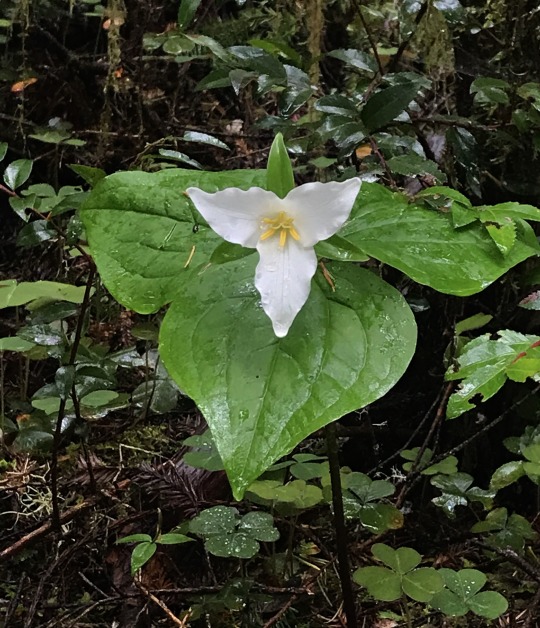

trillium and sorrel underneath redwoods - Trillium Falls Trail
Prairie Creek Redwoods State Park, CA
[my 📷]
13 notes
·
View notes
Text
Beaver dams create refuges for fish populations during fires, and also help to maintain water quality post-fires
#zoology articles#aslzoology#asl zoology#beavers#animals#cute animals#zoology#studyblr#science#environment#sustainability#cottagecore#fire#wildfires#stem#stemblr#ecology#forest ecology#marine ecology#marine biology#fish
75 notes
·
View notes
Text
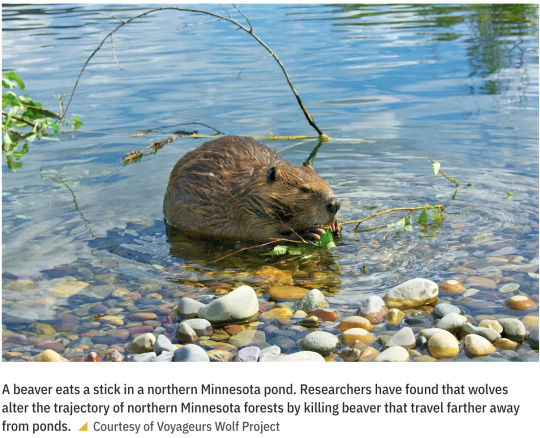
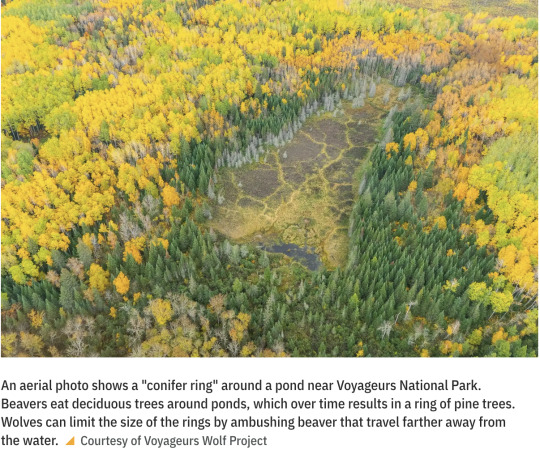
#voyageurs wolf project#wolves#beavers#minnesota#boreal forest#ecology#wildlife#animals#forest ecology
2 notes
·
View notes
Text
Unveiling the Secrets of the Forest: A Conversation with Dr. Suzanne Simard

View On WordPress
#author discussion#biodiversity#book club#Canadian Biotech Action Network#CBAN#Ecological Awareness#ecosystem dynamics#Environmental Education#Environmental science#Finding the Mother Tree#forest adaptability#Forest Adventure#Forest Appreciation#forest community#forest conservation#forest conversation#Forest Discovery#forest discussion#Forest Ecology#forest ecosystems#forest encounter#forest engagement#forest experience#Forest Exploration#forest immersion#forest insights#forest interaction#forest journey#forest knowledge#forest learning
0 notes
Text
"There's no credit card for nutrients or the national debt" -Dr Colin Beier
#forest Ecology#beier#colin beier#suny esf#esf#nutrients#nutrient cycling#national debt#debt ceiling#quotes#quote
0 notes
Text
Meet the Barred Owl: A Nocturnal Master of the Forest
Posted By Andy on August 18, 2023
Barred owls (Strix varia) stand as enigmatic inhabitants of our forests, their presence felt through the night as their haunting hoots pierce the darkness.
In this exploration, we will delve deep into the captivating world of barred owls, uncovering their habitat preferences, intricate behaviors, communication strategies, and the invaluable role they play in maintaining the delicate balance of our ecosystems.
The Hoots that Echo Through Time
Barred owls are renowned for their distinctive vocalizations that resonate through the woods, creating an enchanting ambiance in the nocturnal forest.
Often referred to as "Hoot Owls," they are known for their rhythmic hooting pattern. This vocalization isn't merely a melodic call; it serves as a form of communication that is essential for territorial demarcation and courtship rituals.
As each owl's hoot is unique, it's not just a call—it's a way of announcing its presence to potential mates and rivals alike.
Hunters of the Night: Strategies and Adaptations
The mastery of the night defines the barred owl's hunting prowess. Their ability to thrive in the darkness is attributed to a combination of their exceptional low-light vision and acute sense of hearing.
Barred owls exhibit an impressive versatility in their diet, feeding on rodents, small mammals, birds, amphibians, and even insects.
Their talons, designed for precision and power, allow them to swoop down on prey with astonishing accuracy.
The Habitat Mosaic: Where Barred Owls Call Home
Barred owls are habitat generalists, adapting to a diverse range of environments across North America.
From deciduous and mixed forests to swamps and wetlands, these birds have demonstrated their resilience by thriving in various ecosystems.
Their adaptability isn't solely about the physical environment; it extends to their nesting preferences as well.
Whether in tree cavities, abandoned nests of other birds, or even human-made nest boxes, barred owls showcase their ability to adapt their nesting locations to their surroundings.
A Peek into Human-Owl Interactions
Barred owls have inadvertently become participants in the urbanization narrative.
As human populations expand into natural habitats, the lives of these owls intersect with ours.
Their presence in suburban and urban areas highlights the undeniable impact of human activity on the natural world.
The encounters between humans and barred owls evoke curiosity, concern, and the realization of the delicate equilibrium that must be maintained to ensure the survival of both species.
The Wiki: A Gateway to Deeper Understanding
For those seeking an in-depth exploration of the barred owl's life, behavior, and significance, this wiki page serves as an invaluable resource.
Delve into detailed insights provided by experts, enthusiasts, and researchers who have dedicated their efforts to unraveling the mysteries of these majestic creatures.
From nesting habits to vocalizations, the wiki offers a comprehensive journey into the world of barred owls.
In Conclusion: Guardians of the Nocturnal Realm
In the intricate tapestry of our natural world, barred owls emerge as guardians of the night, maintaining the delicate balance that underpins ecosystems.
Their haunting hoots, diverse diet, and adaptability to varied habitats reveal their multifaceted role.
As we marvel at their nocturnal mastery, it is a reminder that every species, no matter how enigmatic, contributes to the grand symphony of life.
When the moon rises and the forest comes alive with the gentle hoots of barred owls, take a moment to appreciate the ancient connection between these creatures and the timeless world they inhabit.
Disclaimer: This article is presented for informational purposes only and should not be construed as professional advice. Consult experts for specific inquiries regarding wildlife and conservation.
#Barred Owl#Nocturnal Birds#Forest Ecology#birdwatching#ornithology#birds#birding#birdphotography#owls
1 note
·
View note
Text
The World's Forests Are Doing Much Better Than We Think
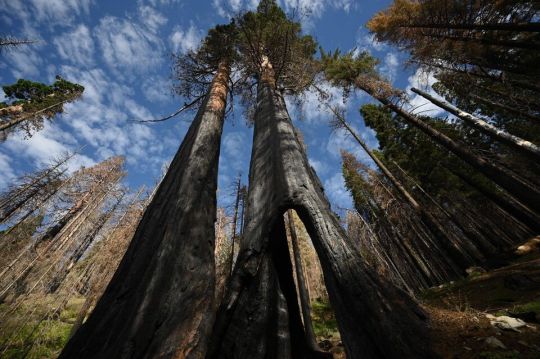
You might be surprised to discover... that many of the world’s woodlands are in a surprisingly good condition. The destruction of tropical forests gets so much (justified) attention that we’re at risk of missing how much progress we’re making in cooler climates.
That’s a mistake. The slow recovery of temperate and polar forests won’t be enough to offset global warming, without radical reductions in carbon emissions. Even so, it’s evidence that we’re capable of reversing the damage from the oldest form of human-induced climate change — and can do the same again.
Take England. Forest coverage now is greater than at any time since the Black Death nearly 700 years ago, with some 1.33 million hectares of the country covered in woodlands. The UK as a whole has nearly three times as much forest as it did at the start of the 20th century.
That’s not by a long way the most impressive performance. China’s forests have increased by about 607,000 square kilometers since 1992, a region the size of Ukraine. The European Union has added an area equivalent to Cambodia to its woodlands, while the US and India have together planted forests that would cover Bangladesh in an unbroken canopy of leaves.
Logging in the tropics means that the world as a whole is still losing trees. Brazil alone removed enough woodland since 1992 to counteract all the growth in China, the EU and US put together. Even so, the planet’s forests as a whole may no longer be contributing to the warming of the planet. On net, they probably sucked about 200 million metric tons of carbon dioxide from the atmosphere each year between 2011 and 2020, according to a 2021 study. The CO2 taken up by trees narrowly exceeded the amount released by deforestation. That’s a drop in the ocean next to the 53.8 billion tons of greenhouse gases emitted in 2022 — but it’s a sign that not every climate indicator is pointing toward doom...
More than a quarter of Japan is covered with planted forests that in many cases are so old they’re barely recognized as such. Forest cover reached its lowest extent during World War II, when trees were felled by the million to provide fuel for a resource-poor nation’s war machine. Akita prefecture in the north of Honshu island was so denuded in the early 19th century that it needed to import firewood. These days, its lush woodlands are a major draw for tourists.
It’s a similar picture in Scandinavia and Central Europe, where the spread of forests onto unproductive agricultural land, combined with the decline of wood-based industries and better management of remaining stands, has resulted in extensive regrowth since the mid-20th century. Forests cover about 15% of Denmark, compared to 2% to 3% at the start of the 19th century.
Even tropical deforestation has slowed drastically since the 1990s, possibly because the rise of plantation timber is cutting the need to clear primary forests. Still, political incentives to turn a blind eye to logging, combined with historically high prices for products grown and mined on cleared tropical woodlands such as soybeans, palm oil and nickel, mean that recent gains are fragile.
There’s no cause for complacency in any of this. The carbon benefits from forests aren’t sufficient to offset more than a sliver of our greenhouse pollution. The idea that they’ll be sufficient to cancel out gross emissions and get the world to net zero by the middle of this century depends on extraordinarily optimistic assumptions on both sides of the equation.
Still, we should celebrate our success in slowing a pattern of human deforestation that’s been going on for nearly 100,000 years. Nothing about the damage we do to our planet is inevitable. With effort, it may even be reversible.
-via Bloomburg, January 28, 2024
#deforestation#forest#woodland#tropical rainforest#trees#trees and forests#united states#china#india#denmark#eu#european union#uk#england#climate change#sustainability#logging#environment#ecology#conservation#ecosystem#greenhouse gasses#carbon emissions#climate crisis#climate action#good news#hope
3K notes
·
View notes
Text
How it started:

How it's going:

@systlin made the mistake of adding a couple of quick lines about overpopulation in the King's Landing Kingswood to A Crossing of Fires and then I compounded the issue by doing maths about it and now the entire rest of the fic has been derailed
#mitraka#systlin#sys fixes westeros through the power of love and also fire and also 'power of no more bones'#and now also forest population ecology#fantasy ecology#deermageddon
4K notes
·
View notes
Text
Quick post on what's happening in Atlanta right now
So there's this beautiful trail in Atlanta called the South River Forest Trail. As we all know, Atlanta Georgia is renowned for their tree cover and historic forests.
The City of Atlanta and corporations like Delta, AT&T and Amazon are funding a massive police training center that will destroy the forest.
Dubbed ‘cop city’ by many protesters, this will cost about $90 million to build. This will be used to further militarize Atlanta’s police leading to more incidents of police brutality in the city.
On January 18th indigenous activist Manuel “Tortuguita” Teran was shot and killed by the police for defending this historic forest from destruction. Their reason? “He did not comply” (Tort went by They/them/it but report said “he”). Many protests have been going on in Atlanta to defend this forest.
Since Tortuguita's death, the situation has quickly deteriorated
This forest is very dear to me but I am unable to physically protest at the moment, so I am handing this off to Tumblr to spread awareness. Rebloging this may help this tragedy become part of national news instead of just an Atlanta problem.
Donation and petition links to stop cop city
https://www.gofundme.com/f/stoptheswap2020
https://act.colorofchange.org/sign/no-cop-city-atl/
https://defendtheatlantaforest.org/solidarity
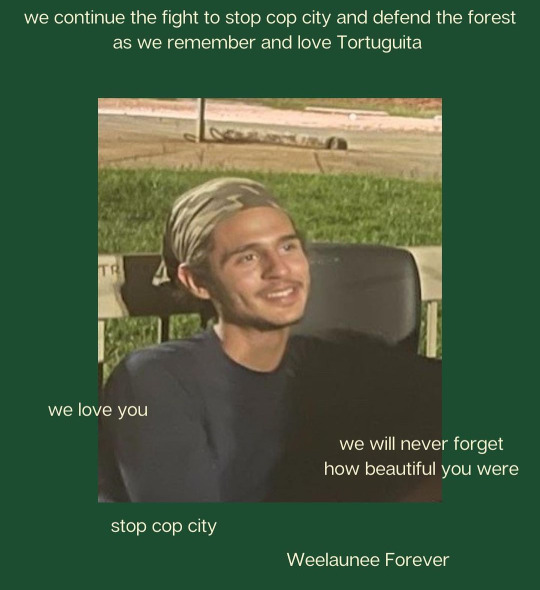
#stop cop city#atlanta#Georgia#mutual aid#social justice#ACAB#protect the forest#environmetalists#politics#tw guns#tw police violence#tw death#Atlanta southern forest#cop city#at&t#amazon#delta#forest#ecology#let me know if i should tag anything else#atlanta south river forest
10K notes
·
View notes
Photo
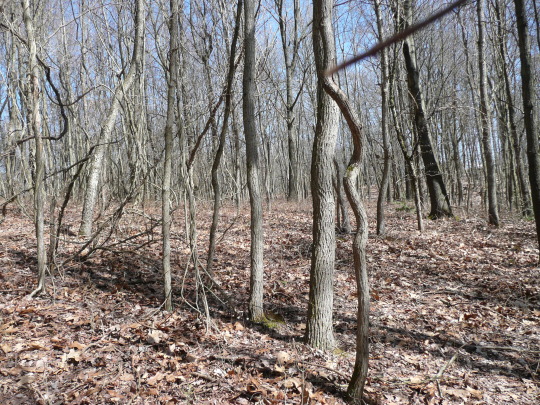

A young forest at Eden Hall, an old forest at Eden Hall
3 notes
·
View notes
Text
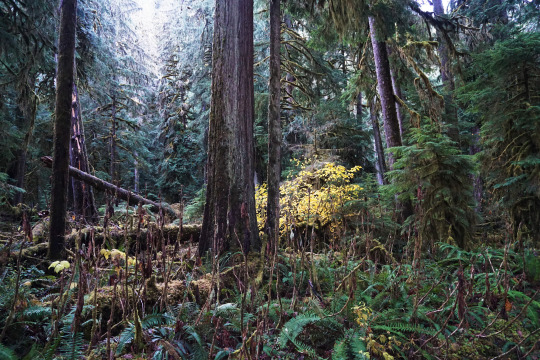
Landscape Language
Understory (noun) – plants that grow under a forest canopy
While the top of the trees in a forest are called the canopy, plants below the canopy are part of the understory. In the understory at Carbon River, smaller trees and shrubs grow in the abundant moisture and shade among the trunks of the tall trees. Nearly every bit of space is taken up by living plants. The thick understory of skunk cabbage and devil's club make passage difficult. Some plants adapt to the wet soil by developing shallow root systems. Others have air pockets that allow oxygen to travel from leaves to roots. Many different mosses, lichens and ferns also thrive here, absorbing water and nutrients from rain and fog. The understory is also the level that most visitors to the forest experience – have you explored the understory at Carbon River?
NPS Photo of the understory at Carbon River, 11/26/22. ~kl
22 notes
·
View notes